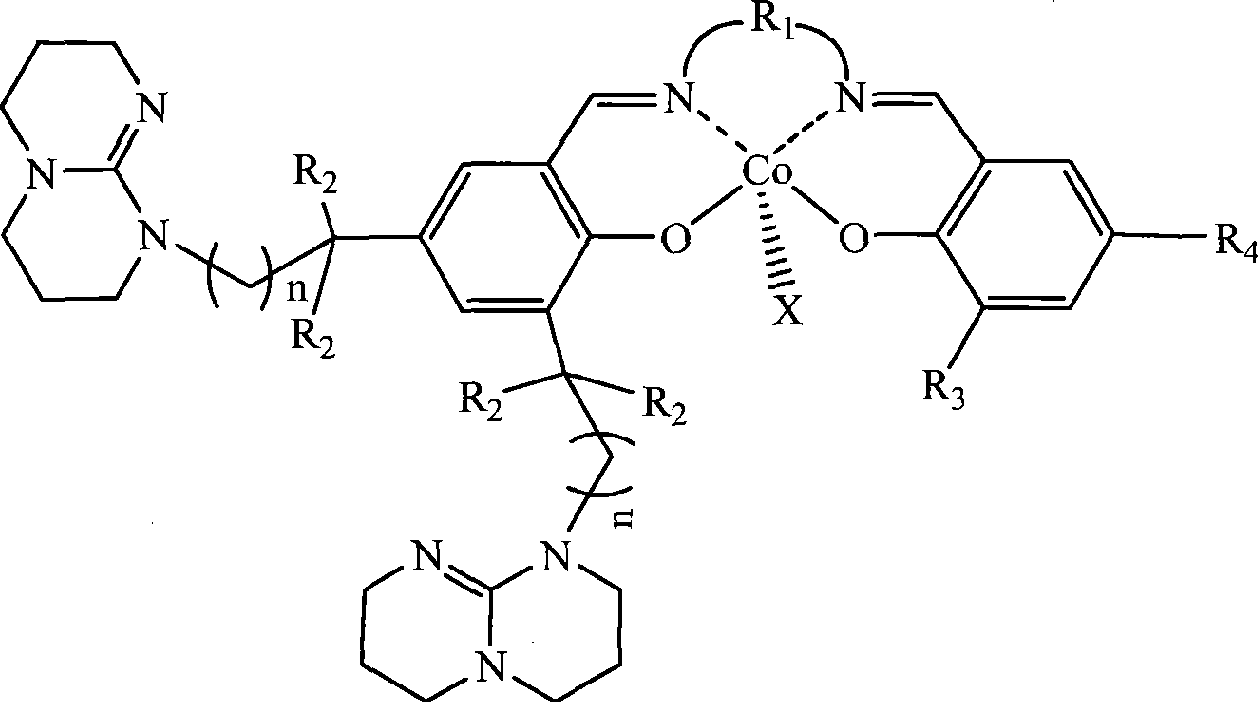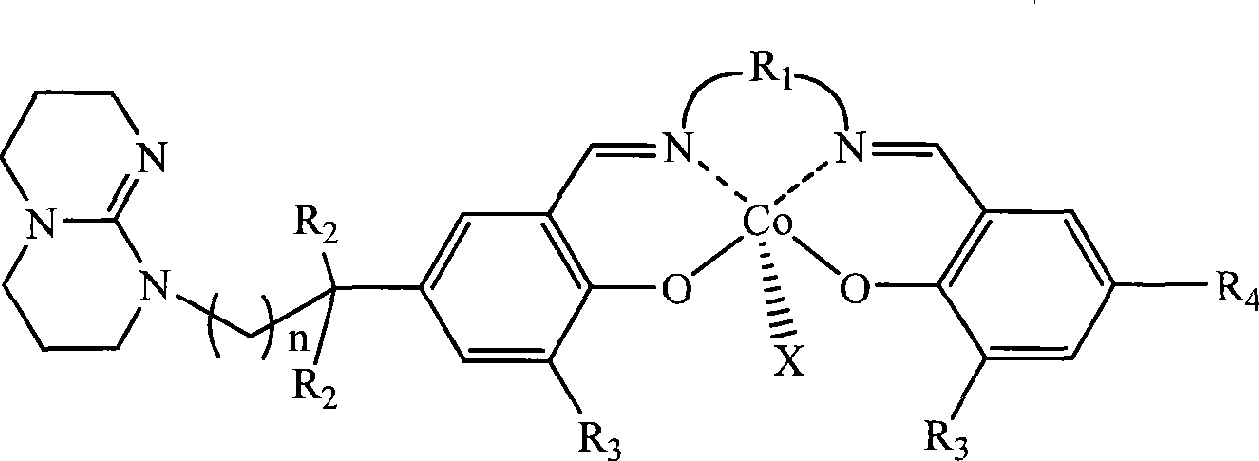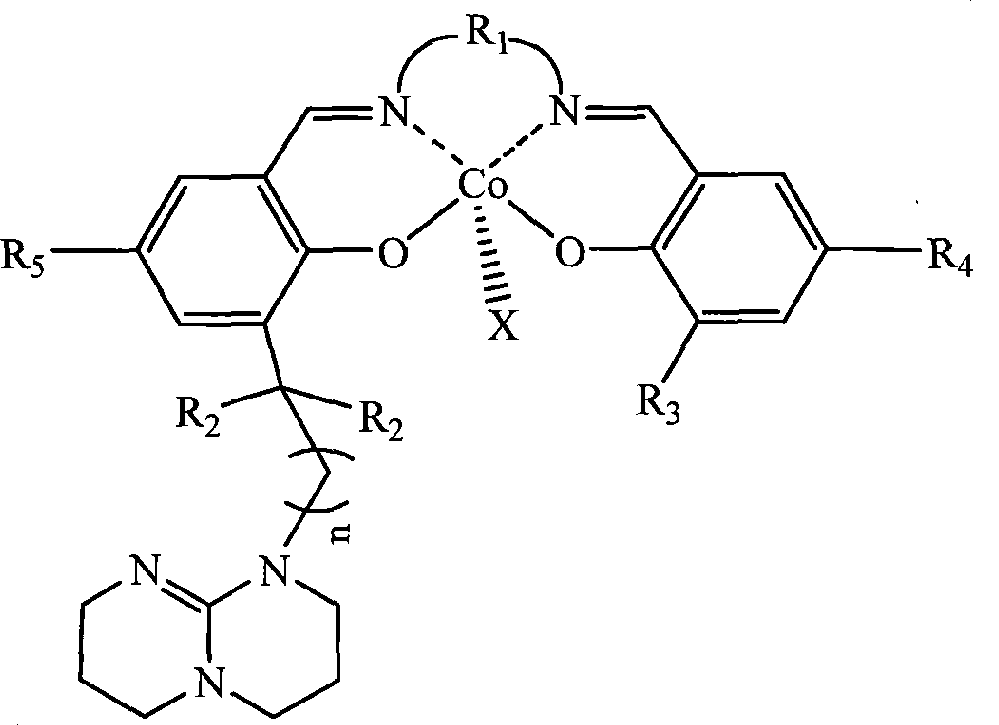Single site catalyst for synthesizing polycarbonate
A polycarbonate and catalyst technology, applied in the field of high-activity single-active-site catalysts, can solve the problems of high pressure, low catalyst activity, and long reaction time, and achieve the effects of mild reaction conditions, high catalyst activity, and high catalytic activity.
- Summary
- Abstract
- Description
- Claims
- Application Information
AI Technical Summary
Problems solved by technology
Method used
Image
Examples
Embodiment 1
[0037] In a stainless steel autoclave with an effective volume of 200ml, add in the following order at ambient temperature: 0.1 mmol of tetradentate Schiff base cobalt complex (R 1 is cyclohexanediamine, X is a nitrate anion; R 2 = H; R 3 , R 4 , R 5 Both are tert-butyl groups; the organic base group is at the 3-position of a benzene ring of the ligand; n is 2) and 1 mole of propylene oxide, and then carbon dioxide gas is introduced and a constant pressure of 2.0 MPa is maintained. Control the temperature at 25°C, react under magnetic stirring for 6 hours, slowly release unreacted carbon dioxide in the autoclave, collect unreacted propylene oxide in a cold trap at -20°C, and then add a certain amount of methanol / chloroform mixture The polymer was dissolved, and then a large amount of ether was added to precipitate polycarbonate. It was filtered, washed several times with diethyl ether, and vacuum-dried to constant weight to obtain 27 g of polypropylene carbonate as a white...
Embodiment 2
[0039] In the same equipment used in Example 1, using the same catalyst, under the same conditions, only the mol ratio of catalyst to propylene oxide was increased from 1:10000 to 1:50000 (using 0.02 mmol catalyst and 1 mole Propylene oxide). After reacting at 25° C. for 24 hours, 21 grams of polypropylene carbonate was obtained, the molecular weight was 223,000, the molecular weight distribution was 1.29, and the carbonate units in the polymer exceeded 99%.
Embodiment 3
[0041] In the same equipment used in Example 1, using the same catalyst, under the same conditions, only the mol ratio of the catalyst to propylene oxide was increased from 1:10000 to 1:200000 (using 0.008 mmol of catalyst and 1.6 mole Propylene oxide). After reacting at 50° C. for 10 hours, 19 grams of polypropylene carbonate was obtained, the molecular weight was 318,000, the molecular weight distribution was 1.37, and the carbonate units in the polymer exceeded 99%.
PUM
 Login to View More
Login to View More Abstract
Description
Claims
Application Information
 Login to View More
Login to View More - R&D
- Intellectual Property
- Life Sciences
- Materials
- Tech Scout
- Unparalleled Data Quality
- Higher Quality Content
- 60% Fewer Hallucinations
Browse by: Latest US Patents, China's latest patents, Technical Efficacy Thesaurus, Application Domain, Technology Topic, Popular Technical Reports.
© 2025 PatSnap. All rights reserved.Legal|Privacy policy|Modern Slavery Act Transparency Statement|Sitemap|About US| Contact US: help@patsnap.com



